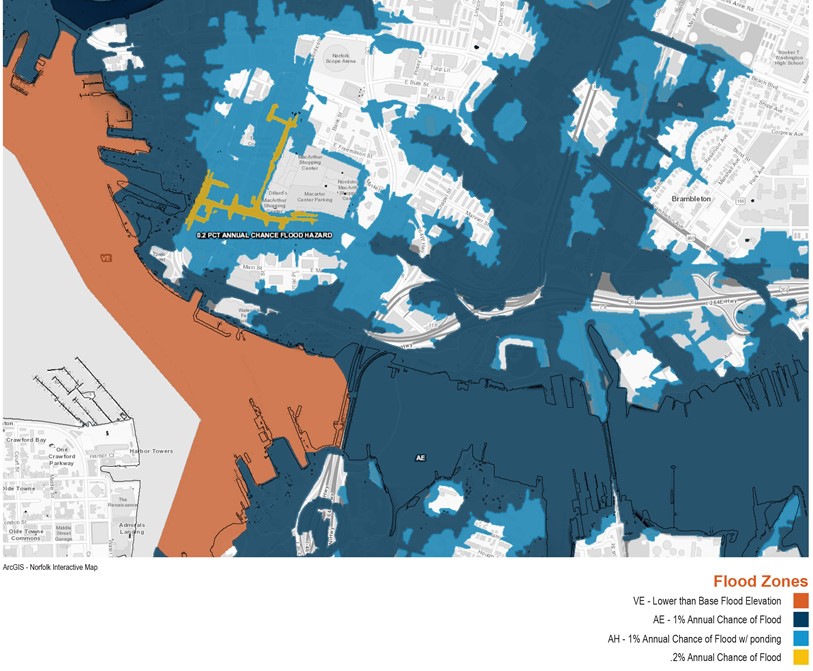Hanbury Summer Scholars Imagine a Resilient Harbor Park
It's no mystery why Norfolk leaders have talked so much about resiliency these past few years. Climate Central puts the Norfolk / Virginia Beach area as the fourth most hurricane vulnerable city on the East Coast. But as our Summer Scholars came to understand during their research project, resiliency planning in Norfolk is about more than just flood waters.

"I began the summer knowing next to nothing about urban resilience and now I hope to continue studying it in the future." admitted Julia Costa "This project was a great way to learn about the city of Norfolk, its stresses and challenges, its strengths, and its identity." Hanbury's Summer Scholar program invites a small group of design students to spend 10 weeks at our Norfolk office to be involved in project work and to tackle an exploratory project.
This year's scholars, Julia Costa, Michael Farkas, Claire Shue, Anne Taylor Windsor and Jonathan Warner, dove deep into what resiliency means to Norfolk. They researched and proposed new ideas for Harbor Park, the home to the Tides baseball stadium but otherwise an underutilized waterfront area adjacent to Norfolk's bustling downtown as well as Tidewater Gardens, the largely African American, low income neighborhood that is disproportionately affected by flooding.

The Summer Scholars quickly recognized the social challenges of our diverse but divided city and realized that this must also be addressed for Norfolk and everyone within it to survive and thrive regardless of the crises that may likely confront it.
Using the City's resilience planning as a jumping off point, the Scholars first interviewed Norfolk city and community leaders and then sought out other projects and cities worldwide to understand other approaches to the similar problems. "I saw a side of Washington DC which I have never seen before," noted Summer Scholar Jon Warner in touring projects relevant to the Harbor Park research.

The Scholars' proposed interventions are not small moves, but it takes big thinking to become a model coastal city. They offer four key structure and land form ideas – The Overpass, The Waterfront Park, The Canal and The Boomerang – that collectively aim to heal social divisions, bridge physical barriers, grow a vibrant economy, regenerate natural systems and habitats, and mitigate flood waters. A pedestrian pathway beneath the freeway overpass integrates alternative and healthy transportation options. This modified bridge, accessible by all, invites a shared experience and is symbolic of breaking down income and social inequality. The waterfront park preserves the natural environment, creates a recreational amenity and a buffer from tides, storms, sea-level rise and subsidence. The canal idea is not new – there was a canal originally in this place. Its restoration gives water a place to go other than into the Tidewater Gardens neighborhood and provides new waterfronts to add interest and development opportunities. The boomerang idea would be an icon for the city and the stadium. It also creates another attraction to help make Harbor Park a destination.
The students all commented on the importance of the research project to their summer as a Scholar at Hanbury. According to Mike, "It was an excellent experience working with a team of other scholars developing a project far greater than ourselves." This immersive research effort spanned almost three months and made up a significant portion of the Summer Scholars' time spent at Hanbury. Readers can explore their complete work here. Claire reflected, "The late night coffee house sessions were definitely worth it and I hope the project can inspire growth within the community of Norfolk."
The completed study was sent to members of Norfolk's city planning, economic development and resiliency departments as well as to select members of the business community.
